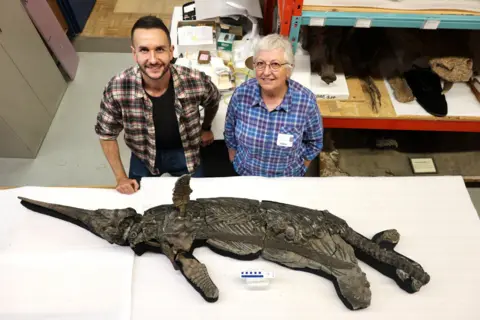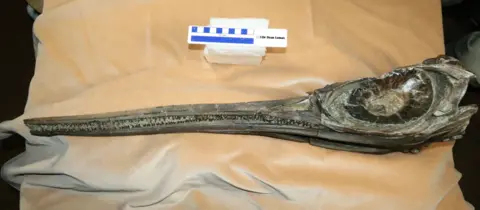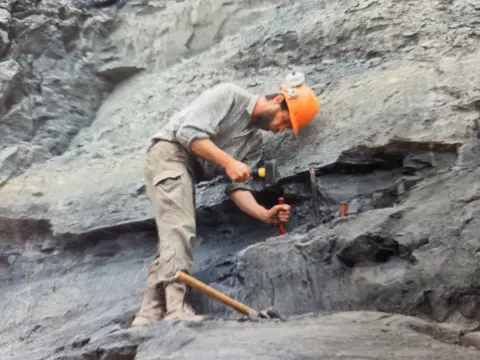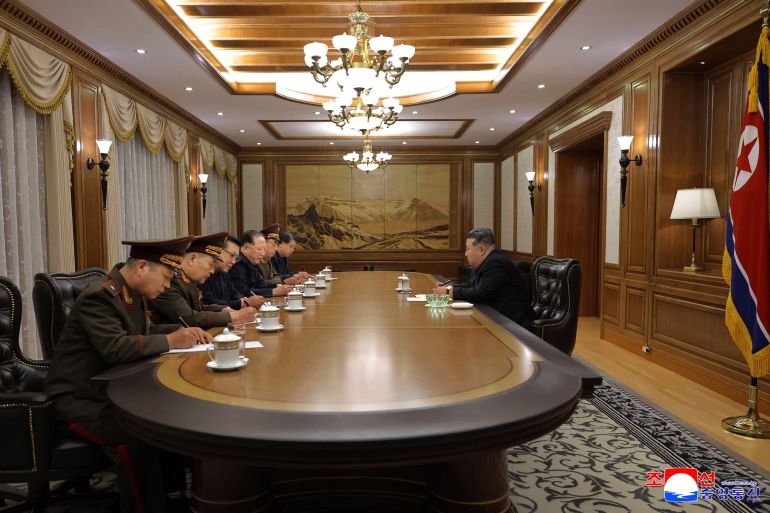China’s Stealth Sharp Sword Unmanned Combat Air Vehicles Deployed To Operational Airbase
Satellite imagery shows several GJ-11 Sharp Sword stealthy flying-wing uncrewed combat air vehicles (UCAV) were deployed to a very active dual-use military-civilian airport in western China for weeks between August and September. This would be in line with an operational test and might point to the GJ-11 having reached a semi-operational state. The Sharp Sword is a prime example of China’s heavy investment in flying-wing uncrewed aircraft, which stands in ever more stark contrast to the U.S. military’s eschewing of such designs, at least publicly.
Imagery in Planet Labs’ online archive database shows three GJ-11s at Shigatse Air Base, also known as Shigatse Peace Airport, in China’s Tibet Autonomous Region, from August 6 through September 5. The Sharp Sword has been in development for more than a decade and is understood to be designed to at least perform penetrating air-to-surface strike and intelligence, surveillance, and reconnaissance (ISR) missions. It also has the potential for use in air-to-air combat as an electronic warfare platform.



At least two of the drones seen in the images of Shigatse have overall gray paint schemes, as is commonly seen on other Chinese crewed and uncrewed military aircraft. At least one additional example is seen with a red/brown colored protective covering of some kind. A Planet Labs image of Shigatse taken on September 10, seen below, shows Flanker-type fighters with similar covers.

Though its location is remote, Shigatse occupies a strategic position along China’s southwestern flank with India. It is situated just around 90 miles northeast of the boundary with India’s Sikkim state, which is one of a number of border areas between the two countries that have seen sometimes violent skirmishes. In the past five years or so, the Chinese People’s Liberation Army (PLA) has been steadily working to expand its ability to project airpower from multiple bases in the Tibet and Xinjiang Autonomous Regions, as you can read more about here.
Shigatse’s main runway is one of the longest in the world, stretching approximately 16,404 feet (5,000 meters) in length. An additional 9,840-foot (3,000-meter) auxiliary runway, with seven large aircraft parking spots attached to it, was also completed at the facility back in 2017. An expanded apron for military aircraft was also subsequently constructed at the eastern end of the base. Work to further enlarge that apron, and to build what looks to be at least five hangars and other supporting infrastructure adjacent to it, has been underway for around a year now.


In line with all this, Shigatse has a significant and active PLA presence. In terms of crewed aircraft, there is a continuous fighter presence at the base, which has included Flanker-type and J-10s over the years. Satellite imagery shows that other fixed-wing military aircraft, including airborne early warning and control planes, as well as helicopters, operate from there, as well.
Shigatse is also a very well-established hub for drone operations, with various types, including members of the China Aerospace Science and Technology Corporation’s (CASC) Rainbow family, having been continuously based there for years now. Shigatse was notably the first known operating location for the high-flying WZ-7 Soaring Dragon reconnaissance drone. WZ-7s, which also have a constant presence at the facility, are used to collect intelligence along the border with India.

The nature of the PLA’s activity at Shigatse strongly points at least to the GJ-11s having been sent there for some type of operational testing. Prior to this, Sharp Swords had been primarily spotted at test facilities, such as the sprawling and secretive base at Malan in Xinjiang province. The drones have been flying daily at Malan for more than a year now. Mockups have also been spotted at Chinese naval test and training facilities, as well as at parades.


Flying from Shigatse would offer a real-world opportunity to explore and refine tactics, techniques, and procedures for employing the drones operationally, as well as just how they might fit into existing force structures. The base, which lies at an elevation of nearly 12,410 feet (3,782 meters), also offers an especially high-altitude testing location, as well as one that is in proximity to an area of active tension with India and that country’s air defense overlay.
Having multiple Sharp Swords at the facility would also allow for demonstrations of their ability to operate cooperatively, as well as alongside crewed platforms, and potentially do so with a high degree of autonomy. China’s J-20 stealth fighter is regularly presented as a likely aerial companion to the GJ-11. TWZ has been highlighting for years how the two-seat variant of the J-20 would be especially well suited to the airborne drone controller role.
The GJ-11 has already been in development for more than a decade, with a prototype with a substantially less stealthy design having first flown in 2013. A mockup with a drastically refined low-observable (stealthy) configuration broke cover at a parade in Beijing in 2019. Continued work on Sharp Sword now also includes a naval variant or derivative capable of operating from aircraft carriers and big deck amphibious assault ships, which has been referred to unofficially at times as the GJ-11H, GJ-11J, or GJ-21. Just over a year ago, TWZ reported in detail on clear evidence that the development of the GJ-11, overall, was accelerating, pointing to the drone getting increasingly closer to an operational state, at least in its land-based form.
As noted, the GJ-11 is just one example of the PLA’s larger pursuit of multiple types of stealthy flying-wing drones for use as UCAVs and in other roles, especially high-altitude, long-endurance ISR missions. Three previously unseen flying-wing designs have emerged in China just this year. This includes the appearance of two particularly large types at Malan, which TWZ was first to report on in both cases. We had assessed years ago that an explosion of investment in flying-wing drones in China was likely to come, and that academic institutions tied to the country’s weapons development ecosystem would play a key role. The Chinese aviation industry has also been surging ahead, in general, in the development of new advanced crewed and uncrewed designs.


Chinese flying-wing UCAV developments, in particular, reflect something of a trend globally, with Russia, India, Turkey, and France also publicly pursuing this kind of capability to varying degrees. The U.S. military is pointedly absent from this space, at least that we know, despite decades of development work that looked for a time to be on the cusp of yielding operational platforms before various programs were abandoned. You can read more about that history in extensive detail in this past TWZ feature.
When it comes to China’s GJ-11, the imagery of Shigatse from August and September offers new signs that these drones are getting close to at least a limited operational state, if they haven’t already reached that milestone.
Contact the author: [email protected]









